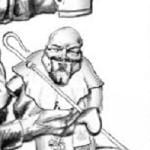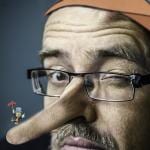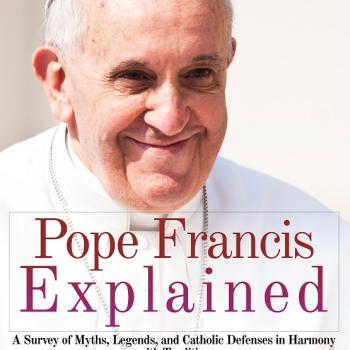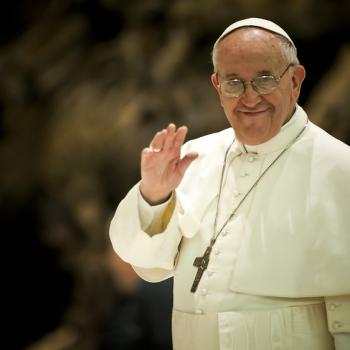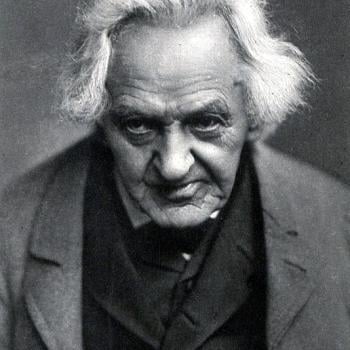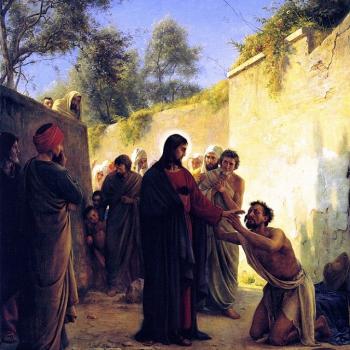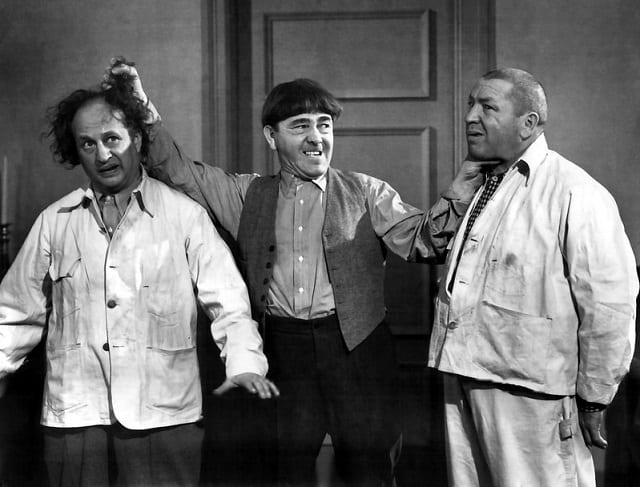
The latest document in the endless parade of such “protesting” tomes is, of course, “Protest against Pope Francis’s sacrilegious acts” (or, Contra Recentia Sacrilegia), having to do with the events regarding alleged idol-worship at the Amazon synod (“Pachamama” etc.). I have dealt with this controversy three times:
“Pachamama” [?] Statues: Marian Veneration or Blasphemous Idolatry? [11-5-19]
“Pachamama” Fiasco: Hysterical Reactionaryism, as Usual [11-8-19]
“Pachamama” Confusion: Fault of Vatican or Catholic Media? [11-12-19]
And I have exposed the extreme reactionary leanings (being against Vatican II and/or the Pauline / ordinary form Mass and/or opposed to the canonizations of Pope John Paul II, Pope Paul VI, etc.) of various radical Catholic reactionaries, who repeatedly sign the various formal protests against Pope Francis, now four times:
Radical Reactionary Affinities in “Filial Correction” Signatories [9-28-17]
Reactionary Influence: Correctio & June 2016 Criticism of the Pope [1-24-18]
1) The Remnant (“TR”)
2) Rorate Caeli (“RC”)
3) One Peter Five (run by self-appointed prophet of doom, Steve Skojec: “1P5”)
1) Prof. Roberto de Mattei is published at RC (7-2-17 / 1-28-15 / 7-13-17 / 3-29-17 ). In the latter article he writes: “who could have ever imagined that a pontifical document, Pope Francis’ post-synod Exhortation, Amoris Laetitia made public on April 8th 2016, would endorse adultery?” At the top it states: “. . . whose columns we bring you here first in English each week.” 1P5 announces with great fanfare a lecture by Dr. Mattei in Washington DC (3-8-17). He’s clearly hailed as one of reactionary “good guys.”
He has an article at RC entitled, “To which Church does Pope Bergoglio belong?” (10-19-16). In this article he clearly thoroughly distorts the Holy Father’s words that he cites, with the inane analysis: “Pope Bergoglio calls ‘good Lutherans’ those Protestants who do not follow the faith of Jesus Christ, but its deformation and ‘lukewarm Catholics’ those fervent sons and daughters of the Church who reject the equalizing of the truth of the Catholic religion with the error of Lutheranism.”
[Note: I’ve been informed that among Italians, use of the form “Pope Bergoglio” is not derisive in intent, as with English-speaking reactionary Catholic usage]
In another RC masterpiece from 11-2-16 he opines: “What surfaced during the ecumenical meeting between Pope Francis and the World Lutheran Federation on October 31st in Lund, seems to be a new religion.” Like most reactionaries, he has not the slightest clue as to the true nature of authentic Catholic ecumenism. After all, ecumenism is one of the things (one of the four hallmarks) that they detest and despise. He’s also interviewed on 1P5 (5-16-17).
2) Deacon Nick Donnelly is a regular columnist at the pathetic reactionary site One Peter Five (ten articles listed), and (more recently), Rorate Caeli (he took pains to inform his readers of this infamous writing “gig” on his Twitter page, noting this article; thanks for reading, Deacon Nick!). The sedevacantist site Novus Ordo Watch noted about him in an article (complete with screenshot): “For years Donnelly ran his Twitter account under the handle @ProtectThePope, yet a few days ago, on July 17, he notified his followers that he was changing his Twitter name from @ProtectThePope to @ProtectTheFaith.” He also has 33 articles listed at Michael Voris’ reactionary organization, Church Militant. Michael Voris claimed that Pope Benedict XVI exaggerated his illness in order to allow for an “immoral” resignation.
He has attacked Pope St. John Paul II and associated him with the alleged heresies of Pope Francis: “Pope John Paul II’s Assisi syncretist jamboree gives Francis the excuse for this travesty. Just as JPII’s unilateral change to the Catechism over the death penalty gives Francis the ‘mandate’ to change it at will. Francis is exploiting every mistake made by Pope John Paul.” (Twitter, 9-18-18) He doesn’t like Vatican II very much. On 19 October 2019 he tweeted, reacting to the “Pachamama” fiasco: “Is Catholic sensibility so coarsened and jaded by Vatican II that this doesn’t register?” On 19 December 2018 he tweeted about “Vatican II in a nutshell: Satan the friendly snake for children.”
3) Christopher Ferrara is perhaps the most prominent figure at The Remnant: one of the most influential radical Catholic reactionary organizations. He was a key man in promoting the ridiculous title, “neo-Catholic”. Gerry Matatics (who was a sedevacantist and now — even beyond that — thinks there are virtually no valid Masses anywhere) originally coined the term in the late 90s.
Ferrara picked it up and promoted it in his 2002 book, The Great Facade (see also the expanded 2nd edition, 2015). His latest article, entitled, “Luther’s Revenge: The Neo-Catholic Surrender to Protestantism” (9-24-17) is an attack on Catholic Answers and one of the very best Catholic apologists today, my friend Jimmy Akin.
A thousand ludicrous, slanderous, self-evidently false citations could be culled from The Great Facade (I have a copy of the original edition in my library), but just a few will suffice to give readers an idea of its nature and tenor:
[S]ome neo-Catholic commentators are honest enough to admit that the Council and the conciliar Popes have introduced true novelties into the Church. Taking the bull by the horns, they openly declare that John Paul II is an innovator, who sees in Vatican II (as did Paul VI) a mandate for previously unheard-of progressivist undertakings . . .
[T]he traditionalists we would defend have been in just the right place all along: the postconciliar novelties are neither Magisterial nor formally heretical; they do not actually bind the Church to an act of belief in what is wrong. The Pope is still the Pope, and yet this is the worst crisis the Church has ever endured, in part because the conciliar Popes, helped along by the blind “obedience” of the neo-Catholics, have refused to acknowledge that there is a crisis, but instead persist in the very novelties that have engendered it. . . .
[T]he documents of Vatican II are a hopeless muddle of ambiguity from which it is impossible to discern the “real Council,” . . . The “real Council” is, therefore, a chimera. (pp. 38-39, 58-59, 308)
Ferrara is (very characteristically of radical reactionaries) inveterately opposed to Vatican II, the ordinary form of the Mass, ecumenism, and the present pope (whoever he is). These are the four identifying / defining marks of the reactionary. He was just as much against Pope St. John Paul II and Pope Benedict XVI, as he is now against Pope Francis. Nothing new at all, in other words.
5) Dr. Robert Hickson here we get more of the good old-fashioned heterodox / semi-schismatic reactionary hostility to Vatican II: which, as Cardinal Ratzinger made clear in 1985, has the same exact authority as the Council of Trent. Maike Hickson wrote about her husband at the radical reactionary site One Peter Fiveon 8 January 2018:
My husband – then [in 1985] a Professor and Head of the Literature Department at Christendom College – challenged Mr. Lawler (as well as Christendom Philosophy Professor Russell Hittinger) – and with it the Council – concerning some of its problematic aspects. He then questioned whether the College effectively wished to “preserve the revolution of the Second Vatican Council,” and he added that he believed that parts of the teaching of the Council cannot be reconciled with the Church’s tradition, especially about religious liberty, syncretism, and indifferentism, and about grace, a sincere but erroneous conscience, and about the very nature of the Church (de Ecclesia).
6) Dr. Maike Hickson is a reular contributor to reactionary sites, One Peter Five and Lifesite News. She showed herself to be anti-Vatican II in her review on One Peter Five, of Ross Douthat’s book, To Change the Church:
While further discussing the council, Douthat shows how ambiguities were deliberately placed into its documents – “because the Council had many authors, and because many of those authors were themselves uncertain about what could be changed” (p. 23) – so that in some way, two different readings, the liberal as well as the conservative, were “in some sense intended by Vatican II.” With regard to the topic of religious liberty, for example, “there seemed to be a plainly-revised teaching, but even where there wasn’t there was a new language, and the apparent retirement of older phrases and rhetoric and forms.” Importantly, the author adds: “And this linguistic shift inevitably suggested a new teaching, to those who wished to have one, even as it stopped short of offering one outright.” [italicized word was, it appears, in Douthat’s book]
7) Fr. John Hunwicke is anti-Vatican II. He wrote on his own blog (9-19-17): “Clearly, we have now definitively (irreversibly?) moved out of the dark shadow of Vatican II. ” He wrote (2-17-07): “Vatican II, like so many of its predecessor councils, is obsolete or, at the very least, obsolescent.” Fr. Hunwicke compares Pope Francis to Pope Honorius: the most notorious example of an actually or allegedly [Catholic historians and theologians differ] “heretical” pope in history:
Pope Honorius I (9-23-17)
. . . Honorius encouraged heresy by neglect.
Does this have any relevance for our times and our troubles?
Whatever may be the objective meaning of Amoris laetitia, whatever the intentions of the current pope in issuing it, there can surely be little doubt that he has de facto encouraged heresy by neglecting to correct those bishops and episcopal conferences which have promoted interpretations of the document constructively allowing for adultery.
This, in my own personal, subjective, and fallible opinion, is what most securely brackets Francis I with Honorius I, although, as a dutiful Catholic, I respect and love both of them equally and enormously. [bolding and italics in original]
The current pope is neither learned nor intelligent. . . .Given a world so sadly unappreciative of eccentricity, in most other organisations this side of North Korea the Men in White Coats would have been sent in to hustle such a CEO out of public view. (8-29-17)
The time has surely come for the Four Cardinals who intervened last year with their Dubia to revisit the question. And the time for Bishops, Successors of the Apostles according to the teaching of Leo XIII and of Vatican II and not mere vicars of the Roman Pontiff, to speak with courage, clarity and unanimity. And for clergy, laity, and academics to do the same. Remember that, at the height of the Arian Crisis, it was not among the Bishops or even in Rome that the Faith was most conspicuously preserved and defended.
8) Dr. Peter Kwasniewski I debated him and defended Pope Benedict XVI and the “reform of the reform” (of the liturgy). He opposed both. He makes a frontal attack on Vatican II, Pope St. John XXIII, Pope St. Paul VI, Pope St. John Paul II, and Pope Benedict XVI in his article, “RIP, Vatican II Catholicism (1962-2018)”: scandalously and outrageously published at One Peter Five:
I was once one of those Talmudic scholars who attempted to square every circle in the sixteen documents of the Council. I praised their textual orthodoxy and lamented their neglect or distortion at the hands of hijackers. I knew that the loyal Catholic mentality always began its sentences “if only…”: “If only the new liturgy were properly celebrated…”; “If only the new catechism were widely taught…”; “If only people everywhere could just follow the lead of the great Polish pope” (and later, “the great German pope”).
That’s where I used to live. I have since moved on to a bigger and more beautiful dwelling called traditional Catholicism. I was tired of living in the newly built, supposedly more energy-efficient and environmentally sound but in reality flimsy, drafty, fluorescent, insect-infested, falling-apart building produced by the only ecumenical council that made no solemn definitions and issued no solemn condemnations. I came to see, . . . that the hijackers were not the ones after the Council, but the ones inside the Council who cleverly steered it toward the progressivism and modernism they secretly longed for, deliberately planting “time bombs” throughout the documents – ambiguous phrases that could be turned this way or that, and which were turned this way and that in the neverending turf war between liberals and “conservatives” of every stripe, at every level. . . .
For a long time, I thought John Paul II and Benedict XVI were fighting the good fight against this revolutionary reinterpretation of Christianity, but after a few high-profile interreligious meetings, osculations of the Koran, book-length interviews with dialectical answers to every question, and other such indicators, I lost my enthusiasm for them as pastors, whatever I might have admired in their philosophical or theological writings (which, however you slice it, are not the primary job of a pope). It was a shock to the system to realize that these popes, though undoubtedly well intentioned, were swimming in a lake of Kool-Aid rather than the ocean of Tradition – the only difference being that they were strong enough to keep swimming and occasionally cry out to heaven for help, instead of drowning and sinking to the bottom like a millstone with a cardinal tied around its neck.The last five years are not a sudden catastrophe that came from nowhere; they are the orange juice concentrate of the past fifty years, the last act in a tragedy that has been escalating to this point. Bergoglio is the distillation of all the worst tendencies in Roncalli, Montini, Wojtyła, and Ratzinger, without any of their redeeming qualities. Francis’s predecessors were conflicted and inconsistent progressives; he is a convicted modernist.
9) Dr. John Lamont signed the piece published by the reactionary luminaries at The Remnant, questioning the beatification of Pope St. John Paul II. He’s an “equal opportunity” pope-basher. In another article at the notoriously reactionary Rorate Caeli (5-11-15) he goes after Vatican II advocates, decrying those “who wish to apply a ‘hermeneutic of continuity’ to Vatican II, or who deny that there can be any opposition or rupture between the documents of that council and Catholic tradition, or who claim that the assertion that the authentic teachings of Vatican II formally contradict the tradition of the Church is false”.
This , too, was praised and passed along at One Peter Five. He wrote an article which was posted at RC, entitled, “On the Formal Correction of Pope Francis” (2-12-17). It was enthusiastically referenced two days later by 1P5. In it, he opines:
In the light of the fact that Pope Francis has openly endorsed heretical understandings of Amoris laetitia in his letter to the bishops of the Buenos Aires region of Sept. 5th 2016, it is more likely than not that he is in fact a formal heretic. . . .*[T]he crisis over Amoris laetitia and Pope Francis’s support for heresy is not simply the result of a rogue pope having disastrously been elected. The failure of the hierarchy to oppose the Pope’s disastrous actions is the result of a deeply-rooted systemic problem in the Church. It is not just this failure, but also the heterodox programme of Pope Francis and his allies, that is rooted in this problem.
10) Michael Matt is one of the big shots at the notorious reactionary site, The Remnant. See my critique of their many serious errors, way back in 2000.
11) Brian M. McCall bashes and lies about Pope Benedict XVI, Vatican II, and the ordinary form of the Roman Rite Mass (three of the four classic hallmarks of reactionaryism):
Unless Benedict XVI is claiming that the Council Father John Paul II is not part of the Council of the Fathers but rather the Council of the Media, the destruction of the Church’s hierarchical structure by collegiality and the People of God is not the work of this supposed Council imposter but rather is in harmony with the letter and the spirit of the Council of the Fathers. . . .
[I]t was not the media but Paul VI, Archbishop Bugnini, the various bishops conferences, the Congregation for Divine Worship and the document which enabled them all, the Constitution on the Liturgy, which wrought this destruction of the Roman Rite.
It is always easier to blame a scapegoat. It allows you to avoid the real evidence. It is even easier when the real culprit is a friend, or protégé. Pope Benedict was one of the midwives who gave birth to the historical real documented Second Vatican Council and it is much easier to blame the big bad media than one’s beloved child. Have no despair; notwithstanding the continual downward spiral of the Church in all areas of measurement, the real Council is finally emerging says Pope Benedict, with a smile of hope for his priests “50 years later, the strength of the real Council has been revealed. [when would that be?] Our task for the Year of Faith is to bring the real Second Vatican Council to life [but I thought it already has been revealed?].”
You see the “real Council” is finally after all these long years showing its true self. “The real strength of the Council was present and slowly it has emerged and is becoming the real power which is also true reform, true renewal of the Church.” But it was the documents of the real Council that authorized and encouraged the prayer meeting at Assisi, the New Mass, the bureaucratic tyranny of bishops’ conferences, the appointment of women chancellors of diocese, etc., etc. What Pope Benedict evidently cannot accept, even after two years of detailed documentation presented in the doctrinal discussions with the Society of St. Pius X, is that it was the documents of the real Council that contained the time bombs whose shrapnel is now imbedded [sic] all over our Church in crisis. The media and journalists only reported, with glee and celebration, what the Council said and what the popes following it implemented in its name. The last fifty years is simply the natural consequence of the ideas and expressions issued by the Council. It is this hard truth which the retiring Council Theological Expert does not want to hear. It seems he is willing to keep the unjust internal exile of the SSPX in place, notwithstanding an apparently strong personal desire to end the injustice, because he will not face the terrible crisis that was the Second Vatican Council.
All we can do is pray that God permits the next pope to be someone who is not a man of the Council, but who is willing to call a spade a spade and tell the media: Away with this robber Council; we are going back to Tradition. (“Will the Real Second Vatican Council Please Stand up!”, The Remnant, 2-15-13)
12) Prof. Paolo Pasqualucci is profoundly against Vatican II as well, which was triumphantly proclaimed on One Vader, er Peter Five (” ‘Points of Rupture’ of the Second Vatican Council with the Tradition of the Church – A Synopsis”: 4-13-18):
It has become an inevitability that in our attempts to understand the current crisis in the Church, we must look back upon the events that precipitated it. There is perhaps no more debated topic in this regard than the question of whether the Second Vatican Council was unjustly marred by a poor implementation and interpretation — the ill-defined and often reckless so-called “Spirit of Vatican II” — or was in itself problematic and thus formative in bringing us to the present ecclesiastical moment. What is beyond dispute, however, is that the council did, in one way or another, play a pivotal role in the digression of contemporary Catholicism from the longstanding traditions — liturgical, sacramental, and doctrinal — of the perennial Church.
Today, we present an analysis by Paolo Pasqualucci, a Catholic philosopher and retired professor of philosophy of the law at the University of Perugia, Italy. Pasqualucci identifies, in this adaptation of the introduction to his book Unam Sanctam – A Study on Doctrinal Deviations in the Catholic Church of the 21st Century, 26 distinct points of rupture with the Tradition of the Church in the texts of the Vatican II documents themselves.
I wrote a twelve-part refutation of this atrocious article.
What instead leaps to the attention in the current situation is precisely the underlying doctrinal deformation that, as skillful as it may be in evading directly heterodox formulations, still maneuvers in a coherent way to carry forward an attack not only against particular dogmas like the indissolubility of marriage and the objectivity of the moral law, but even against the very concept of right doctrine, and with it, of the very person of Christ as Logos. The first victim of this doctrinal deformation is precisely the pope, who I hazard to conjecture is hardly aware of this, a victim of a generalized epochal alienation from Tradition, in large segments of theological teaching; after him, there are innumerable victims who fall into deception. . . .
Now, these five questions have put the Pope in a stalemate. If he were to answer them by denying the Tradition and the Magisterium of his predecessors, he would pass to being formally heretical, so he cannot do it. If instead he were to answer them in harmony with the previous Magisterium, he would contradict a great part of the doctrinally relevant actions taken during his pontificate, so it would be a very difficult choice. He, therefore, chose silence because, humanly speaking, the situation can appear to have no way out.
14) Prof. Enrico Maria Radaelli Sandro Magister, in his article, “High Up, Let Down by Pope Benedict” (Chiesa, 4-8-11) describes Dr. Radaelli’s disappointment with the German Shepherd (good ol’ pope-bashing again):
In the erudite and vibrant pages of his new book [Entrance to Beauty, 2007], however, Radaelli does not fail to subject to criticism the current hierarchy of the Catholic Church almost in its totality, including the pope.
The disappointment over the action of Benedict XVI stems – for Radaelli as for other traditionalists – not only from his having convened a new interreligious encounter in Assisi, or having initiated the “Courtyard of the gentiles”: both initiatives seen as a source of confusion.
The biggest fault attributed to pope Ratzinger is that of having declined to teach with “the power of a scepter that governs.” Instead of defining truths and condemning errors, “he has made himself dramatically open even to being criticized, not claiming any infallibility,” as he himself wrote in the preface to his books about Jesus.
Even Benedict XVI would therefore have submitted to the capital error of Vatican Council II: the renunciation of dogmatic definitions, in exchange for a “pastoral,” and therefore inevitably equivocal, language.
16) Dr. Anna Silvas wrote in an extreme, absurd article, “A Year After Amoris Laetitia. A Timely Word” (4-21-17):
Now, in the few short years of Pope Francis’ pontificate, the stale and musty spirit of the seventies has resurged, bringing with it seven other demons. And if we were in any doubt about this before, Amoris Laetitia and its aftermath in the past year make it perfectly clear that this is our crisis. That this alien spirit appears to have finally swallowed up the See of Peter, dragging ever widening cohorts of compliant higher church leadership into its net, is its most dismaying, and indeed shocking aspect to many of us, the Catholic lay faithful. I look up at any number of higher prelates, bishops and theologians, and I cannot detect in them, by all that is holy, the least level of the sensus fidelium—and these are bearers of the Church’s teaching office? . . .*But I think ‘the spirit’ to which Francis so soothingly alludes, has more to do with the Geist of Herr Hegel, than with the Holy Spirit of whom our blessed Lord speaks, the Spirit of Truth whom the world cannot receive, because it neither sees him nor knows him (Jn 14:17). The Hegelian Geist on the other hand, manifests itself in the midst of contradictions and oppositions, surmounting them in a new synthesis, without eliminating the polarities or reducing one to the other. This is the gnostic spirit of the cult of modernity. . . .*When I hear those who lecture us that Pope Francis is the voice of the Holy Spirit in the Church today, I do not know whether to laugh at the naivety of it, or weep at the damage being done to immortal souls. I would say that yes, Francis is the agent of a spirit, namely the Hegelian Geist of ‘modernity’ very much at work in the Church.
1) Views of Vatican II as Heretical and Not a Legitimate Ecumenical Council
Christopher Lamb, writing for The Tablet (3-22-18), observed:
Mr Sire has written half a dozen history books including one on Catholic tradition where he describes the Second Vatican Council as a “betrayal of the Church’s faith” that needs to be “reversed” and backs the traditionalist group, the Society of Saint Pius X. [made quite clear in Chapter 15, pp. 41-430, 434-438]
The book he is referring to is Phoenix from the Ashes: The Making, Unmaking, and Restoration of Catholic Tradition (Angelico Press, July 14, 2015). The words cited above appear to be from page 205. I can’t access that in the Amazon “Look Inside” feature. But there is plenty in what I can access on Amazon that is very troubling and outrageous:
The Second Vatican Council as a Betrayal of the Faith (subtitle: p. 201)
In the Council’s documents the effects of this [liberal / heterodox] influence were seen concretely in the definition of the sources of Revelation in a Protestantising sense and in the decrees on ecumenism and on the priesthood.
The question of explicit heresy brought in through the council documents will be dealt with later, in the chapters on the priesthood and on religious freedom. Here it would be appropriate to comment upon Gaudium et Spes . . . While free of actual heresy, this is a deplorable document. . . . The document is pervaded by modern materialist standards . . . (p. 203)
Innovation in doctrine is the charge that traditionalists lay against the second Vatican Council, and it also applies to the changes that have emerged since the Council. . . . The case to be made here is that no such innovations of doctrine were made before the Second Vatican Council, and that those of the present time are proof of the heretical position into which the Council has drawn the Church. (p. 207)
What the Church cannot do is teach one doctrine at an earlier time and an opposite one later. Even less can it consistently condemn a doctrine over a period of time and proceed to teach that doctrine immediately afterwards. That is the position into which the modern Church has fallen in its efforts to woo the contemporary world, specifically in its teaching on freedom of religion and on the ideology of secular liberalism. These are not examples of development of doctrine but of plain reversal. (pp. 215-216)
The Second Vatican Council introduced changes which make the Church of today unrecognisable by the standards of tradition . . .
The idea that there have been heretical councils, of some sort, in the Church’s history, is a perfectly familiar one. The so-called Arian councils of Milan, Sirmium, Ariminum, Seleucia, and Constantinople (355-60) are examples of councils regarded as heretical . . . (p. 217)
Only through their defence of objective orthodoxy against false councils was the final assertion of the true doctrine made possible. The same criterion applies to the Second Vatican Council. The definitive judgment on its authority will have to be left to a future council of the Church, but in the meantime Catholics have the right and the duty to point out where its teaching conflicts with the doctrine of tradition. (p. 223)The idea that the Church has officially adopted a heretical view of its own nature is one of the products of the second Vatican Council and is the premise on which its ecumenical programme has been founded. (p. 383)
2) Negative Views of the Pauline / Ordinary Form Mass
We need to be clear that in attempting to stamp out the traditional liturgy of the Church, Pope Paul VI and the hierarchies of the world after him were following a policy of complete illegality. This assertion is not a legal quibble; it does not rest on a benign oversight in the constitution Missale Romanum. Paul VI did indeed want to consign the traditional rite to oblivion, but he knew that he was not entitled to do so. Yet even the legitimate intentions of legislation need to be expressed in legally valid form, and where the intention is legitimate there is never any difficulty in ensuring that. The failure of Pope Paul VI to abrogate the old liturgy is the consequence of the fact that it was a wholly illegitimate intention. This is merely part of a wider truth, that the entire liturgical reform is steeped in illegitimacy and illegality from beginning to end: the assumption by Bugnini and his associates of a mission beyond what the Council had authorized, the disregard that they showed for the Congregation of Rites, the ignoring of due process in the introduction of reforms, the overriding of the Synod of Bishops when it opposed the new Mass, the forcing of the new rite on the Consilium by Bugnini on the plea that it was the pope’s personal will, his disobedience of the pope’s direction to submit the General Instruction to the Congregation for the Doctrine of the Faith. When the new rite was brought in, the attempt to accompany its introduction with the abolition of the old was part of the same course of illegality. Hence we ought to recognize what the genuine law of the Church is at present: there is no need juridically for the restoration of the traditional rite. The only thing needed for its recovery is that the Church should return to legality. As a matter of law, there is no obligation on any priest to use the Missal of Paul VI for any celebration, and the only liturgy that has universal right in the Latin Church is the one decreed by Pope St. Pius V in the bull Quo Primum. (p. 286)
The Destruction of the Mass (title of Chapter 11, p. 226)
The Mass of Paul VI as a Rejection of Tradition (subtitle, p. 270)
The Mass of Paul VI as an Expression of Heresy (subtitle, p. 276)
It’s not absolutely clear if he denies the validity of the Pauline Mass or not, but almost all reactionaries don’t do that. Nevertheless, he certainly mercilessly bashes and excoriates and condemns it.
3) Views on the Non-Validity of Ordinations to the Priesthood
The Destruction of the Priesthood (title of Chapter 12, p. 287)
[T]here is good reason to doubt the validity of many ordinations under the new rite, conferred by bishops with no intention of transmitting the traditional sacrament on candidates with no intention of receiving it. (p. 323)
18) John-Henry Westen is editor-in-chief of the notoriously reactionary Lifesite News. See two critiques (one / two) of its dubious “research” methodology / journalistic approach by Catholic writer Scott Eric Alt.
19) Dr. Taylor Marshall is the author of the ridiculous conspiratorial book, Infiltration. I have offered numerous critiques of it and his convoluted reactionary thinking.
***
***
Photo Credit: [Flickr / CC BY-SA 2.0 license]
***


